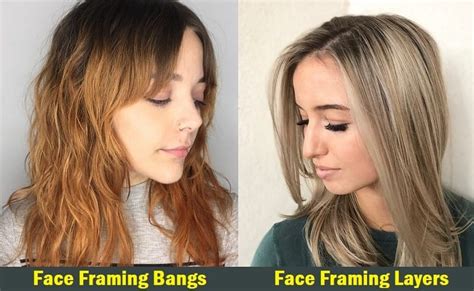Bangs: A Statement of Style
Bangs, or fringes, can instantly transform your look, adding a touch of flair and individuality. They can frame your face, accentuate your features, and draw attention to your eyes.

According to a survey by the American Academy of Dermatology, nearly 25% of women have bangs at some point in their lives. Bangs are particularly popular among younger women, with over 40% of women under 30 sporting them.
Types of Bangs
There is a wide variety of bangs to choose from, allowing you to customize your look:
- Blunt bangs: Straight and cut across the forehead, typically ending just above the eyebrows.
- Wispy bangs: Soft and layered, with a more natural, face-framing effect.
- Curtain bangs: Parted down the middle and swept to the sides, creating a flattering fringe that accentuates the cheekbones.
- Asymmetrical bangs: Cut at an angle, creating a unique and edgy look.
- Baby bangs: Super short and blunt, often ending just above the eyebrows, adding a youthful and playful vibe.
No Bangs: A Classic Elegance
Going without bangs offers a timeless and elegant look. It allows your forehead to show, showcasing your natural facial features and highlighting your hair texture.
According to a study by Wella Professionals, over 50% of women prefer to wear their hair without bangs. No bangs are particularly popular among women over 40, with over 60% opting for this look.
Benefits of No Bangs
- Less maintenance: No bangs require less styling and upkeep, saving you time and effort.
- Versatile: Hair without bangs can be styled in a variety of ways, from ponytails to braids to buns.
- Age-appropriate: No bangs can be more flattering as you age, as they can help to soften wrinkles and lines.
Which Style is Right for You?
Ultimately, the decision of whether to get bangs or not depends on your personal preferences, facial shape, and hair type.
Consider bangs if:
- You have a round or oval face shape that you want to add length to.
- You have thick or dense hair that can handle the extra weight and volume.
- You are looking for a way to draw attention to your eyes or highlight your cheekbones.
Consider no bangs if:
- You have a square or triangular face shape that you want to soften.
- You have fine or thin hair that may be weighed down by the extra hair.
- You prefer a classic, low-maintenance hairstyle.
4 Key Factors to Consider When Choosing
- Face Shape: Bangs can complement certain face shapes better than others.
- Hair Type: The texture and thickness of your hair will determine how well it holds bangs.
- Lifestyle: Consider your daily routine and how much time you are willing to spend styling.
- Personal Style: Ultimately, choose the style that aligns with your personality and aesthetic preferences.
Common Mistakes to Avoid
- Cutting bangs too short: If you are new to bangs, it is better to start with longer bangs and gradually trim them as desired.
- Using the wrong styling products: Avoid using heavy or greasy products that can weigh down bangs.
- Not trimming bangs regularly: Bangs require regular trims to maintain their shape and prevent split ends.
- Over-washing bangs: As bangs are prone to getting oily, avoid washing them too often.
- Ignoring your natural hair texture: If your hair is naturally curly or wavy, it may not be suitable for certain types of bangs.
FAQs
- How often should I trim my bangs? Every 2-4 weeks.
- Can I cut my own bangs? Yes, but it is recommended to consult a hairstylist first.
- Are bangs flattering on older women? Yes, they can help to soften wrinkles and lines.
- Can bangs damage my hair? Yes, if they are cut too short or not trimmed regularly.
- Should I get bangs if I have a lot of frizz? No, as bangs will likely add to the frizziness.
- What is “bang envy”? The desire to have bangs, even if it does not suit your face shape or hair type.
- Are bangs a trend? Bangs have been a popular hairstyle for centuries, but they do go in and out of style.
- Is there a difference between bangs and fringe? No, these terms are synonymous.
